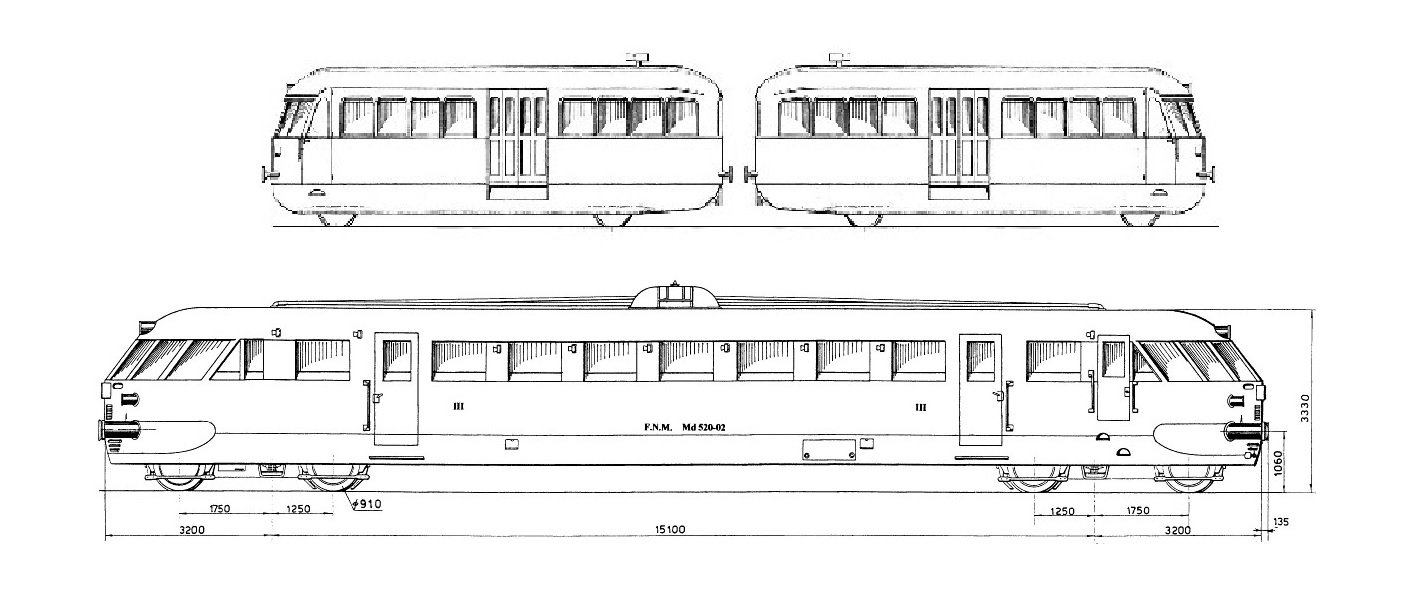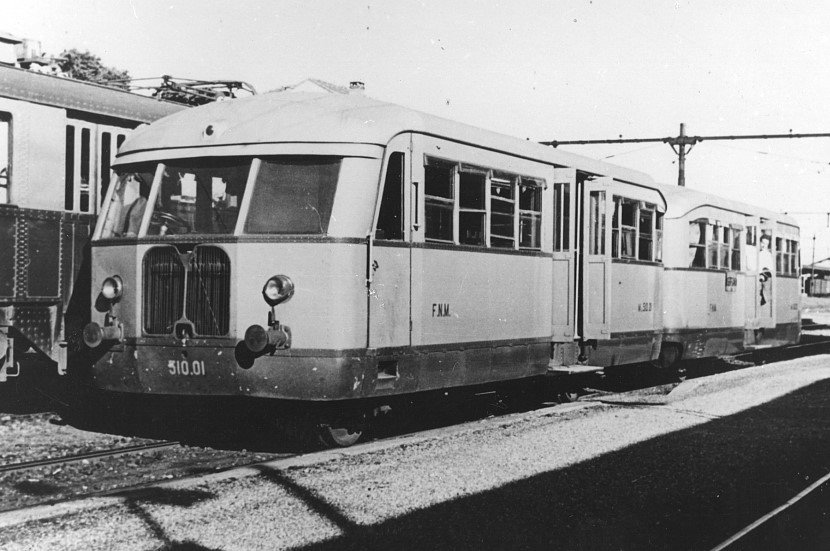In 1934, OM delivered another three 2-axle diesel railcars to FNM, also classified as Md ½ but numbered 11 to 13 (later reclassified as Md 510- 01 – 03). Their appearance was more railway-like than the rail buses; although still derived from automotive constructions, they had a single driving cab at one end where the motor was also located. This was a 6-cylinder 135 hp diesel motor built by OM-BUD, with 4-speed gearbox and cardan shaft on the rear axle. Maximum speed of 80 km/h. Until 1954, these were mainly used on low-traffic lines or lines where, at specific times, they were more cost effective than standard trains. In particular these were Como-Varese, Como-Saronno, Castellanza-Valmorea, Saronno-Novara and lastly Saronno-Seregno. During the war they were temporarily modified to run on natural gas due to the diesel shortage and were fitted with a cylinder fuel tank. With electrification of the Saronno-Seregno line, they were withdrawn in 1954 and scrapped in 1956.
MD 510 and MD 520

- Progettazione: 1938 (Md 520)
- Costruzione: 1939
- Esercizio: 1939-1956
- Massa a vuoto: 27.500 kg
- Rodiggio: 1Ao – Ao1
- Ruote motrici Ø: 910 mm
- Costruttore: BREDA - Milano
- Lunghezza fuori tutto: 21.770 mm
- Larghezza: 2.690 mm
- Trasmissione: Wilson 5 rapporti
- Potenza Motori: 100 Kw
- Numero motori diesel: 2 AEC BREDA
- Altezza massima: 3.330 mm
- Interperno carrelli: 15.100 mm
- Passo carrelli: 3.000 mm
- Trasmissione: giunto idraulico
- Velocita massima: 100 Km/h
- Freno: aria compressa
- Design date: 1938 (Md 520)
- Build date: 1939
- Service date: 1939-1956
- Gross weight: 27,500 kg
- Wheel arrangement: 1Ao – Ao1
- Diameter of the driving wheels: 910 mm
- Builder: BREDA - Milan
- Overall length: 21,770 mm
- Width: 2,690 mm
- Gear ratio: Wilson 5 speed
- Engine power: 100 Kw
- Number of diesel engines: 2 AEC BREDA
- Maximum speed: 3,330 mm
- Distance between bogie centres: 15,100 mm
- Bogie wheelbase: 3,000 mm
- Gear ratio: hydraulic coupling
- Maximum speed: 100 Km/h
- Braking system: compressed air
In 1939 three BREDA-built bogie diesel railcars made their debut on the FNM network, registered as Md 520-01 – 03. Aside from a few small differences, these were largely identical to the FS Aln 556 class. One major difference was that FNM requested that BREDA fit a greater number of seats, even if it meant reducing the maximum speed to 100 km/h by adopting a shorter gear ratio. They were set up for multiple command. The body of these lightweight diesel railcars was an all-metal self-supporting type and offered 24 seats in first class and 40 in third class. The two-seater benchers were arranged in two rows with a central aisle. Powered by two 135 hp Breda AEC engines with Wilson gearbox. In 1943 they were temporarily modified to run on natural gas due to the lack of fuel caused by the war. They were mainly used on the Varese-Como, Saronno-Novara and, until 1956, on the Saronno-Seregno lines. Two units were later sold to Ferrovie Centrale Umbra.

